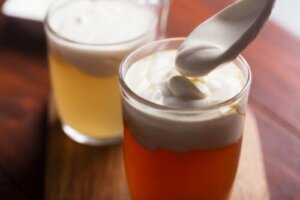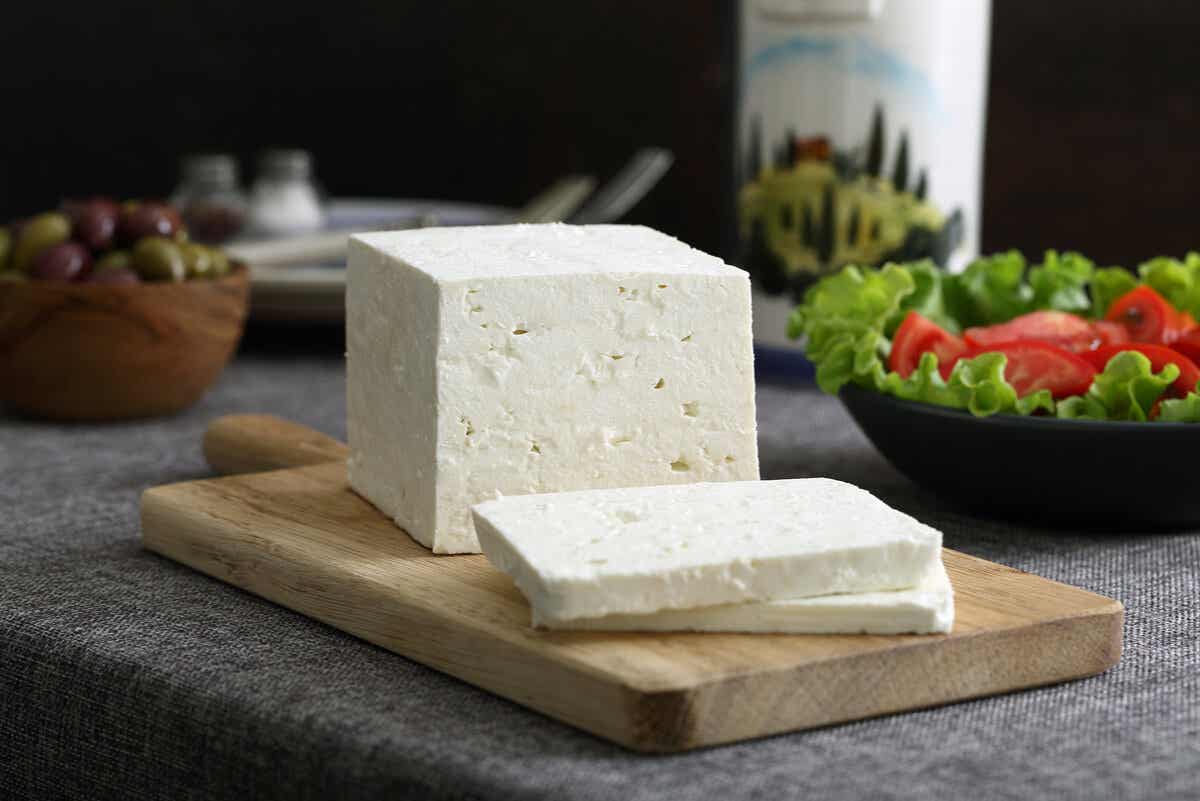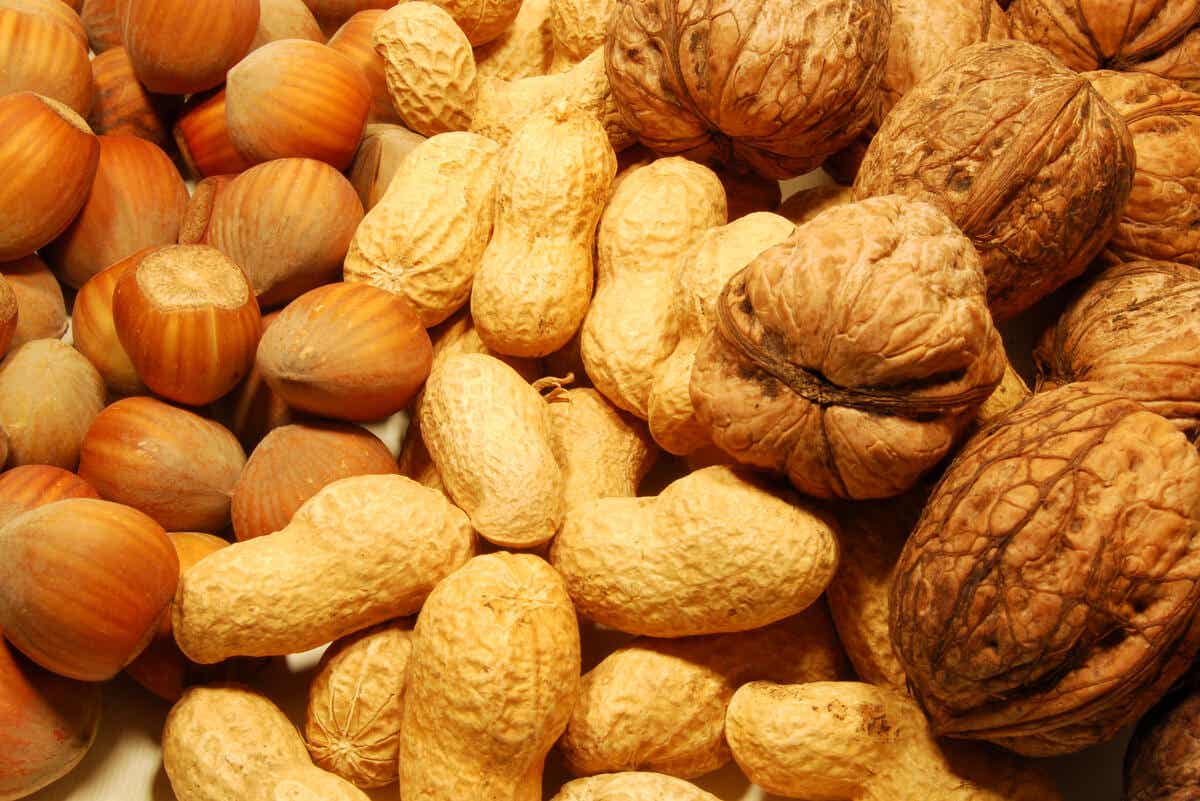Cheese Tea: Origin and Preparation


Written and verified by the nutritionist Saúl Sánchez Arias
Cheese tea is an exotic drink that has several health benefits. It originates from Taiwan, where you can find it in almost every market here. However, in Western countries, it’s a lot less common. For this reason, we’ll show you how you can make cheese tea so you can enjoy it too!
Before we get into it, we need to remind you that infusions are great as part of a healthy diet. Typically, they contain antioxidizing phytonutrients that can neutralize the production of free radicals, which helps you avoid them accumulating in your body’s tissues.
What is cheese tea?
Cheese tea is a drink that you can make with black, green, or matcha tea and comes with whipped cream cheese as its main ingredient. It originated from Asian countries and stands out for its texture and taste. Also, it has an elevated nutritional density.
By containing cheese, this drink provides proteins that have a high biological value. These nutrients have proven they’re essential to ensure adequate muscle function. They help tissues to prepare, aiding in the recuperation process after a period of intense work or physical activity.
Additionally, this tea stands out for containing antioxidizing compounds. In fact, regular consumption of this substance can help prevent the development of chronic and complex issues, according to a study published in the journal Nutrients.
Similarly, the catechins in tea can stimulate the oxidation and movement of fats, which is good for weight loss. You can include it as part of a healthy diet to improve the state of your body composition. As the evidence from an investigation published in Molecules suggests.

Find out more: Four Relaxing Infusions You Can Make at Home
Necessary ingredients
To prepare a cheese tea, you’ll need the following ingredients:
- Salt, sugar, and ice
- 3 fluid oz. of cream
- Black, green, or matcha tea
- 7/10 oz. of cream cheese
- 1 2/3 oz. of whole milk
Step-by-step instructions to make cheese tea
You should start by making the tea you’ve chosen. To do this, you should find out what the optimum temperature for this tea is, and heat the water to that point. Then, add the teabag and cover your cup to allow it to steep for a few minutes. When the process is done, sweeten it to how you like it, and allow it to cool.
In another cup, add the cream cheese and whipped cream, milk, and a little salt. Mix it all together using a whisk until you get a smooth but dense mixture. It needs to be as creamy as possible, so you need to add the whipped cream when it’s in its optimum state.
Next, for the cheese tea, you can simply add ice to the bottom of your glass, cover it with the tea you’ve chosen and add 2 or 3 heaped tablespoons of the cream cheese mixture. You should serve it cold.
You may also be interested in: Make an Infusion From This Plant and Clean Your Kidneys
What can you drink it with?
Choosing a good accompaniment for a tea is key when you want to enjoy it. One option is nuts because they have a high nutritional density and are known to be healthy foods. It’s better to choose raw or toasted nuts. The fried varieties aren’t a good alternative.
Alternatively, some people prefer to accompany their cheese tea with a pastry or sandwiches. These aren’t a good option for every day, but you can do it occasionally. Regardless, you should bear in mind that these kinds of foods have large quantities of trans fats and added sugars.
If you want to add a healthy touch, you can always make guacamole or hummus and eat it with some chopped vegetables or some homemade nachos. These are a good alternative for something to go with your cheese tea.

Prepare a cheese tea and enjoy its taste
Cheese tea is all the rage. Many people are passionate about it because it has a fantastic taste.
For this reason, it has rapidly gained popularity in Western countries. Also, it has the advantage of being easy to make at home, which is why you don’t need to go to a specific establishment to enjoy it.
However, you should remember that this kind of tea comes with an elevated energetic density. This is because it contains cream and cream cheese. For that reason, you should consume it in moderation.
Bear in mind that to ensure a healthy lifestyle, it’s not a question of improving your diet; physical activity is also essential. This way, you can achieve better overall health.
All cited sources were thoroughly reviewed by our team to ensure their quality, reliability, currency, and validity. The bibliography of this article was considered reliable and of academic or scientific accuracy.
- Richter M, Baerlocher K, Bauer JM, Elmadfa I, Heseker H, Leschik-Bonnet E, Stangl G, Volkert D, Stehle P; on behalf of the German Nutrition Society (DGE). Revised Reference Values for the Intake of Protein. Ann Nutr Metab. 2019;74(3):242-250. doi: 10.1159/000499374. Epub 2019 Mar 22. PMID: 30904906; PMCID: PMC6492513.
- Prasanth MI, Sivamaruthi BS, Chaiyasut C, Tencomnao T. A Review of the Role of Green Tea (Camellia sinensis) in Antiphotoaging, Stress Resistance, Neuroprotection, and Autophagy. Nutrients. 2019 Feb 23;11(2):474. doi: 10.3390/nu11020474. PMID: 30813433; PMCID: PMC6412948.
- Rothenberg DO, Zhou C, Zhang L. A Review on the Weight-Loss Effects of Oxidized Tea Polyphenols. Molecules. 2018 May 14;23(5):1176. doi: 10.3390/molecules23051176. PMID: 29758009; PMCID: PMC6099746.Rothenberg DO, Zhou C, Zhang L. A Review on the Weight-Loss Effects of Oxidized Tea Polyphenols. Molecules. 2018 May 14;23(5):1176. doi: 10.3390/molecules23051176. PMID: 29758009; PMCID: PMC6099746.
This text is provided for informational purposes only and does not replace consultation with a professional. If in doubt, consult your specialist.








